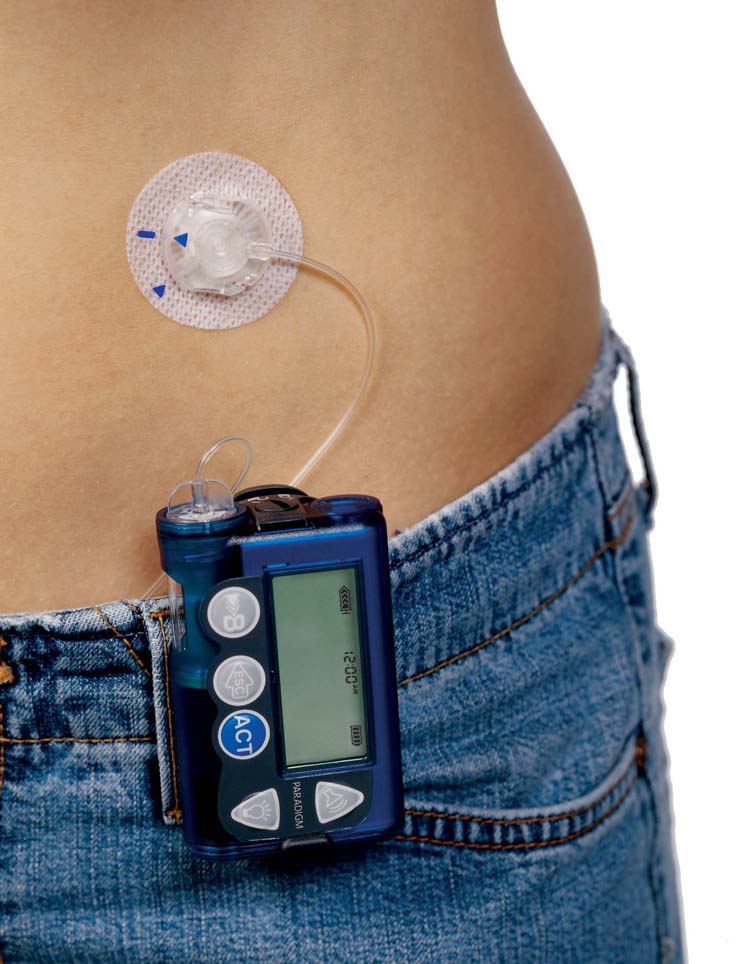Lives Forever Changed—Type 1 Diabetes, A Two Part Series Part Two: Research & Hope
Read part 1 of this series here.
by Dave Alexander
UNLIKE DISEASES SUCH as cancer, diabetes progresses slowly. Because of its slow-moving nature, getting answers as how to best treat and prevent the disease can be difficult.
However, Dr. Tom Gardner, an ophthalmologist at the University of Michigan’s Kellogg Eye Center, said although researchers are still largely confounded by the causes and triggers of type 1 diabetes, the average diabetic still enjoys a much brighter future than those diagnosed a generation ago.
And he believes that trend will continue.
According to the American Diabetes Association, each year, type 1 diabetes afflicts roughly 15,600 youth. Complications from the disease include kidney failure—it is the leading cause of kidney failure in the United States, blindness, heart disease and stroke. Although doctors can test potential diabetics for a genetic predisposition, researchers have yet to narrow down the precise cause of type 1 diabetes.
“We know there is an immune component to it, but we don’t know what triggers that response … It often shows up without warning,” Gardner said. “It’s still frustrating for families to know when their next child may or may not get [type 1 diabetes].”
Gardner works in conjunction with the Juvenile Diabetes Research Foundation (JDRF) to find better treatment options for diabetics. He said research on type 1 diabetes focuses on preventing secondary complications, specifically kidney, heart and eye involvement. Just 15 years ago, most doctors thought type 1 diabetes was mostly a blood vessel disease; now, they are learning to diagnose the disease earlier.
For type 2 diabetes — a metabolic disorder as opposed to an autoimmune disease — doctors often tickle patients’ feet to gauge their loss of sensation, allowing the doctor to track the progression of type 2 diabetes. However, in type 1 diabetes, blood vessels can look normal until it’s almost too late, Gardner said. New developments have allowed doctors to perform similar tests on the eye to stymy the complications that cause blindness.
“Instead of tickling with a filament, we tickle with light,” Gardner said.
Kate Durak, executive director of JDRF’s Southeast Michigan chapter, said innovations such as the artificial pancreas, which is in the last stages of human clinical trials, could be a game-changer. The non-invasive device connects to existing devices and, through the use of a cell phone application, reads diabetics glucose monitor and tells their insulin pumps when and how much insulin to disperse.
“It’s always sensing where your body is … it’s taking past information, and it’s deciding where the person is going next,” Durak said. “It’s not a cure … but this is the closest thing to a cure because this is thinking about [diabetics’] numbers.”
Durak said JDRF takes a grassroots advocacy approach to research and public awareness, lobbying Congress to continue funding type 1 diabetes research.
The National Institute for Health (NIH) and the Food and Drug Administration (FDA) are the two leading government agencies that distribute competitive federal grants to organizations like JDRF for diabetes research. In his fiscal year 2015 budget, President Barack Obama proposed $30.4 billion for the NIH, $211 million over FY 2014, and $4.7 billion for the FDA, which includes a $358-million boost above FY 2014.
According to a Centers for Disease Control 2007 study, the U.S. spends $116 billion annually treating diabetes directly, and its indirect costs add another $58 billion to that number.
Government money becomes increasingly important as private philanthropy dwindles in the wake of an economy that still hasn’t rebounded fully, Gardner said.
“Investing in research is a very, very good investment. There will be a return on your investment. You can’t say that for the stock market,” he said. “Not every research is productive, but research leads to new innovations … it’s not linear like going up a ramp. It is like going up steps.”
One of the biggest challenges surrounding type 1 diabetes is, since a significant chunk of its sufferers are children, is teaching the discipline required to prevent the disease damaging the body, Gardner said. Teaching youth to have the same degree of responsibility as adults can prove daunting. However, there is an upside. Many of the cutting-edge treatments incorporate technologies today’s generation are already adept at using, he added.
Public awareness is also a hurdle.
Dorene Markel, director of The Brehm Center, an Ann Arbor-based diabetes research center, said studies are in dire need of patients.
“There seems to be a lack of understanding,” she said. “People think it’s all done with rats … We don’t have enough participants of the types of people we need.”
Many studies are never completed because of a lack of volunteers, she said. And it’s not just diabetics who are needed. Much of clinical research isn’t about testing drugs and devices on people; a lot of research is simply trying to understand the disease, Markel said, and non-diabetics can help by registering to take part in studies as well. It’s important to get volunteers ahead of time, as to streamline the process when studies are ready to be conducted.
Across the country, there is a push to eliminate waste by making the most of time and resources, Markel said.
“As a country, participation in biomedical research is critical,” she said. “Everybody has a responsibility here to ensure our health and welfare as a country.”
Perhaps the most ground-breaking treatment is still in its infancy, Durak said.
In a process called encapsulation, doctors inject healthy beta cells into a diabetic. Those beta cells, responsible for insulin production, are coated in a permeable protective sheathe, protecting them from the body’s autoimmune response. If successful, the process would eliminate diabetics’ need to inject insulin or use an insulin pump, count carbs or test their blood. It would be as if they didn’t even have diabetes.
“There has never been a better time in the history of mankind to have type 1 diabetes,” Gardner said.

